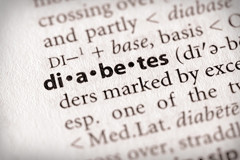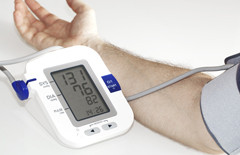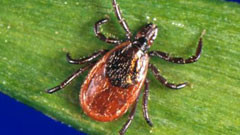
5 timeless habits for better health

What are the symptoms of prostate cancer?

Is your breakfast cereal healthy?

When pain signals an emergency: Symptoms you should never ignore

Does exercise give you energy?

Acupuncture for pain relief: How it works and what to expect

How to avoid jet lag: Tips for staying alert when you travel

Biofeedback therapy: How it works and how it can help relieve pain

Best vitamins and minerals for energy

Should you take probiotics with antibiotics?
Harvard Health Blog
Read posts from experts at Harvard Health Publishing covering a variety of health topics and perspectives on medical news.
Articles
Tattoos, moles, and melanoma
A new report suggests that skin cancer can sometimes hide in a tattoo. Writing in JAMA Dermatology, three German clinicians describe the case of a young man who wanted to remove large, multicolored tattoos on his arms and chest. During the removal process, his doctors discovered a suspicious mole inside the tattoo. It turned out to be cancerous—stage II melanoma. Tattoos may make it difficult to evaluate moles. Laser removal therapy is also problematic when moles are present. If you are considering getting a tattoo, either make sure it will be applied to skin that is free or moles or birthmarks, or have your doctor check any moles in the to-be-tattooed area beforehand. If you are planning to have a tattoo removed, check for moles within the tattoo. If you see any, ask your doctor or dermatologist to check them out before starting laser therapy.
High intake of omega-3 fats linked to increased prostate cancer risk
The omega-3 fats in fish have been linked to all sorts of health benefits, including protection against prostate cancer. But for the second time in two years, researchers have found a link between high levels of omega-3 fats in the blood and prostate cancer. Researchers at the Fred Hutchinson Cancer Center in Seattle men with high levels of omega-3 fats were 43% more likely to have been diagnosed with prostate cancer than men with low levels. The finding were published online in the Journal of the National Cancer Institute.
Back pain often overdiagnosed and overtreated
What doctors call “routine” back pain can really, really hurt. Surprisingly, the best treatment is usually quite conservative—over-the-counter pain relievers, ice and heat, and gentle exercise. Yet for decades, many doctors have been ordering more and more unnecessary tests, narcotics, and referrals to surgery. A new study of 24,000 people treated for back pain from 1999 through 2010 shows that many were not treated according to established guidelines, which promote treatment with over-the-counter pain relievers and physical therapy when appropriate, and advise against early referral for MRI or CT scans, the use of narcotics, or early referral to other physicians for injections or surgery. For a first-time bout with low back pain, or another go-round with it, try cold and heat, rest followed by gentle exercise, and over-the-counter pain relievers, such as acetaminophen or an NSAID like aspirin, ibuprofen, or naproxen.
Go with the flow: engagement and concentration are key
Have you ever been so immersed in what you were doing that all distractions and background chatter just fell away? Nothing existed except the brush and your painting, your skis and the slope, your car and the road. Mihaly Csikszentmihalyi, a renowned professor of psychology at Claremont Graduate University in Claremont, Calif., calls that state of intense absorption “flow.” Flow experiences lead to positive emotions in the short term, and over the long term people who more frequently experience flow are generally happier. Flow experiences have several common characteristics. These include losing awareness of time, not thinking about yourself, working effortlessly, and wanting to repeat the experience. They are more likely to occur when there is a balance between the challenge of an activity and the skill you have in performing it.
Taking aspirin linked to lower risk of colorectal cancer
Aspirin has many uses, from easing a headache or cooling a fever to preventing heart attacks and the most common kind of stroke. It may be time to add “preventing colorectal cancer” to the list. New results from the Women’s Health Study, a clinical trial that evaluated the benefits and risks of low-dose aspirin and vitamin E among nearly 40,000 women, show that aspirin reduces the risk of developing colorectal cancer by 20%. The effect isn’t immediate, but instead takes ten to 20 years to be seen. Aspirin isn’t without its drawbacks, including gastrointestinal bleeding and ulcer formation. Both occurred slightly more often among women taking aspirin. Although the Women’s Health Study results sound promising, don’t go reaching for the aspirin bottle just yet. Taking aspirin—and any other drug—is really a balancing act between benefits and risks.
Genetic testing to guide prostate removal: too soon to know if it helps
Is it possible for a gene test to identify whether a prostate that’s healthy today is sure to develop cancer down the road? And should results of such a test be the basis for removing a seemingly healthy prostate gland? Those are questions raised by recent press reports of a British man who had his prostate gland removed because he carried a faulty gene called BRCA2.
Aspirin-like drug may help diabetics control blood sugar
An old, aspirin-like drug called salsalate could help control blood sugar in people with type 2 diabetes. In the TINSAL-T2D trial, 286 volunteers took pills containing either salsalate or a placebo for nearly a year. Over the course of the trial, those in the salsalate group had lower blood sugar levels, and some were even able to reduce dosages of other diabetes medications they were taking. Experts aren’t exactly sure how salsalate helps control blood sugar, but its effectiveness supports the idea that inflammation plays a role in type 2 diabetes. Although the results are promising, what we really need to know about salsalate (or any new or repurposed drug) is how its long-term benefits and risks stack up against each other. The trial was too small and too short to determine those risks. According to the researchers, such “outcomes require continued evaluation before salsalate can be recommended for widespread use” by people with type 2 diabetes.
Fluids, cool air key to avoiding heat stroke
Summer’s heat is as predictable as winter’s chill. Heat-related illnesses—and even deaths—are also predictable. But they aren’t inevitable. In fact, most are preventable. Most healthy people tolerate the heat without missing a beat. It’s not so easy for people with damaged or weakened hearts, or for older people whose bodies don’t respond as readily to stress as they once did. There are three different levels of heart-related illness: heat cramps, heat exhaustion, and heat stroke. Some simple choices can help you weather the weather. Drinking water and other hydrating fluids is essential. Putting off exercise or other physical activity until things cool down also helps. Chilled air is the best way to beat the heat. Sticking with smaller meals that don’t overload the stomach can also help.
Checking blood pressure at home pays off
Do-it-yourselfers, take heart. Here’s something else to do at home that can have a substantial benefit on your health: measure your blood pressure. It’s easy, inexpensive, and helps control blood pressure better than visits to the doctor. The latest evidence for the benefits of home blood pressure monitoring comes from researchers in Minnesota. In a 12-month clinical trial, 72% of those doing home monitoring had their blood pressure under control compared to 57% who received usual care. The benefits persisted six months after the program had ended. Anyone can monitor blood pressure at home. You can buy a good home blood pressure monitor at a pharmacy or online merchant for anywhere from $50 to $100. Some insurance companies cover the cost.
New trial muddies the water about diet, exercise, and diabetes
Long-awaited results from a nearly 10-year trial exploring the effect of changes in diet and exercise among people with diabetes weren’t what most people expected. The Look AHEAD trial found that intensive efforts to lose weight by eating less and exercising more didn’t provide any more protection against heart disease—a common co-traveler with diabetes—than standard diabetes support and education. The spin from some media reports is that weight loss doesn’t reduce heart disease risk among people with type 2 diabetes, but I think that’s the wrong interpretation. The results of the Look AHEAD trial don’t contradict the value of lifestyle changes. People in the intensive change group improved their blood sugar with fewer drugs, saving an estimated $600 per year, they were also less likely to have developed chronic kidney disease and less self-reported vision problems. The Look AHEAD results reinforce for me that diabetes care needs to be tailored to the individual.
Infection, autoimmune disease linked to depression
Depression, bipolar disorder, and other mental health problems arise when something goes wrong with brain function. What causes that malfunction is an open question. A new study from Denmark suggests that a serious infection or autoimmune disease could trigger a mood disorder. How might an infection or autoimmune disorder lead to a mood or other mental health disorder? Infection causes localized and body-wide inflammation. Inflammation generates substances called cytokines that have been shown to change how brain cells communicate. In autoimmune diseases, the body’s defense system attacks healthy tissues rather than threatening invaders. It’s possible that in some cases the wayward immune reaction could target brain cells and other nerve cells throughout the body.
Healthy fats may fight early-stage prostate cancer
Each year, nearly a quarter of a million American men learn they have prostate cancer. Most are diagnosed with early-stage cancer that has not spread beyond the prostate gland. Traditional treatments include surgery, radiation therapy, and a “watch and wait” strategy called active surveillance. A new study published online this week in JAMA Internal Medicine indicates that diet may be an important add-on. The study, part of the ongoing Harvard-based Health Professionals Follow-up Study, suggests that eating more foods that deliver healthy vegetable oils can help fight the second leading cause of cancer death in men. Earlier studies have implicated the traditional Western diet, which is relatively high in red meat and other sources of animal fats, with a higher risk for developing prostate cancer in the first place, while eating more vegetable oils and vegetable protein may help prevent it.
Move over Mediterranean—a vegetarian diet is equally good for health
The Mediterranean diet has been getting a lot of press as being the very best for health. But there’s another diet that appears to be equally good: a vegetarian diet. A study published in JAMA Internal Medicine found that people who ate a vegetarian diet were 12% less likely to have died over the course of the five-year study than nonvegetarians. The benefits were especially good for men, who had a significant reduction in heart disease. This study underscores the idea that meat consumption influences long-term health, and not in a good way. Should you consider ditching the Mediterranean diet and becoming a vegetarian instead? Either one is healthier than the typical American diet, so it’s really a matter of personal choice.
HPV transmission during oral sex a growing cause of mouth and throat cancer
Actress Angelina Jolie recently went public with her double mastectomy to prevent breast cancer. Governor Chris Christie told us his reasons for gastric bypass surgery. And now actor Michael Douglas is shining the spotlight on the human papilloma virus (HPV)—the number one cause of mouth and throat cancer. In an interview published in The Guardian newspaper in London, Douglas mentioned that his own throat cancer could have been brought on by oral sex, a common way to become infected with HPV. HPV transmitted by sexual contact often doesn’t become active enough to cause symptoms. When it does become active, it tends to invade mucous membranes, such as those covering the lining of the vagina, cervix, anus, mouth, tongue, and throat. An HPV infection can cause warts in and around these tissues. Most people sexually exposed to HPV never develop symptoms or health problems, and most HPV infections go away by themselves within two years. But the infection can persist and cause long-term problems. These include cervical cancer in women, penis cancer in men, and in both sexes some cancers of the anus and oropharyngeal cancer (cancer in the back of throat, including the base of the tongue and tonsils).
A dog could be your heart’s best friend
My twice-daily walks with my border collie, Clair DeNoon, are the highlights of my day. A new report from the American Heart Association will put an extra spring in my steps on these walks. A panel of experts from the American Heart Association has weighed all the available evidence on pet ownership and cardiovascular disease. The verdict: Having a pet—a dog in particular—likely lowers the risk of heart disease. Some of the connection can be attributed to the extra walks dog owners take. Companionship also contributes. If dog ownership is heart healthy, should everyone who cares about heart health have a dog? No. According to the heart association panel, “the primary purpose of adopting, rescuing, or purchasing a pet should not be to achieve a reduction in cardiovascular risk.”
Threat to U.S. from new “bird flu” virus: possible but unknown
Beginning in March, 2013, reports started to come out of Eastern China that a new “bird flu” virus was loose and causing infections in humans. The new virus is called H7N9. Should we in the U.S. be worried? Neither I nor anyone I know can give a confident answer to that question. So far the news is reassuring. A report from the U.S. Centers for Disease Control and Prevention (CDC), and another from a team from China in this week’s New England Journal of Medicine, indicate that so far the new H7N9 virus has not clearly spread from one person to another, and has not spread outside of Eastern China. Even so, every public health agency around the world is keeping a close eye on China. That’s because a virus that cannot spread easily from one person to another can change or swap genes—and suddenly be capable of spreading easily.
Sodium still high in fast food and processed foods
• Fast-food restaurants deliver filling, inexpensive meals and snacks. But there’s usually a hidden added cost: a wallop of salt (sodium) that isn’t good for cardiovascular health. Even with the current clamor for reducing sodium in the American diet, and industry promising to do just that, the amount of sodium in prepared foods hasn’t changed much since 2005, according to a report published in the latest issue of JAMA Internal Medicine. The average sodium in chain restaurant items increased 2.6% between 2005 and 2011. In packaged foods, it fell on average 3.5%. While some are calling for tighter government regulation on the sodium content in processed and restaurant foods, you can take action now.
Angelina Jolie’s prophylactic mastectomy a difficult decision
Angelina Jolie revealed yesterday in a New York Times op-ed article that she underwent a double mastectomy even though she doesn’t have breast cancer. She did that because she carries a gene (BRCA1) that substantially increases her chances of developing the disease. Her mother’s 10-year losing battle with ovarian cancer helped guide her decision. Women who carry BRCA1, BRCA2, or who have at least two close relatives—a mother, sister, or daughter—who have had breast or ovarian cancer are candidates for prophylactic mastectomy. Some women who develop cancer in one breast often have both breasts removed to avoid a recurrence of the disease. Taking time to make the decision, and talking it over with a trusted and knowledgeable expert, is an important part of the decision-making process. Having as much information as possible before choosing prophylactic mastectomy is as empowering as making the decision itself.
New public database shows hospital billing charges all over the map
Most reputable companies that provide services tell you what you’ll get for your money. Hospitals are an exception. They haven’t traditionally made public the cost of operations and other procedures. This secrecy has let hospitals set widely different prices for the same procedure. It’s also made it impossible to do any comparison shopping. Yesterday’s release to the public of a once very private database shows just how big the differences can be from hospital to hospital. The database, released by the Centers for Medicare and Medicaid Services, details what 3,300 hospitals charged for the 100 most common treatments and procedures in 2011. It data reinforce the big differences in charges from one part of the U.S. to another. What’s new and surprising are the huge differences sometimes seen between hospitals in the same city, or even the same neighborhood.

5 timeless habits for better health

What are the symptoms of prostate cancer?

Is your breakfast cereal healthy?

When pain signals an emergency: Symptoms you should never ignore

Does exercise give you energy?

Acupuncture for pain relief: How it works and what to expect

How to avoid jet lag: Tips for staying alert when you travel

Biofeedback therapy: How it works and how it can help relieve pain

Best vitamins and minerals for energy

Should you take probiotics with antibiotics?
Free Healthbeat Signup
Get the latest in health news delivered to your inbox!
Sign Up
























